#zabelleboyajian
Explore tagged Tumblr posts
Text
Armenian Women in Visual Arts

I took a class on Armenian culture and history in university that exposed me to this beautiful country and people and opened my eyes to the undeniable tragedy of the Armenian Genocide of 1915.
I’m not Armenian, but I’m Greek on my dad’s side which I found out is very similar. We both love our dolma’s and hate the Turks. But in all seriousness, we share a lot of similarities with Armenian culture, including its political history, which has helped me to further empathize with the current struggles they are facing as a country. It's heartbreaking to see that, just five years after the 100 year anniversary of the Armenian Genocide, Armenians appear to be facing a second genocide. Armenia’s neighboring country Azerbaijan has been ensuing deadly attacks against them for some time now with the aid of Turkey and the issue continues to be mostly ignored by the international community. Protests have been raging on both in the nation and diaspora. In no way do I consider myself to be an expert on this subject, but I feel responsible at least to educate myself and do my part as a citizen of the world.

There is no civilization in the world that, given it possess the resources and will, doesn’t have artists, doctors, lawyers, chefs, musicians, poets, farmers, accountants, etc... The meaning of this to me is that it is proof we are all valuable people, no matter where we come from or what we look like. Just think about how sand is made from millions of tiny parts but looks like one uniform blanket on the beach. If you were to put a handful of sand into a jar, and another handful into another jar, you’d find that each jar is made up of entirely different rocks. But somehow, both have all the elements needed to still look like a handful of sand. That’s how I view culture. Every culture is a handful of sand; they all have necessarily found their own way to explain the universe (religion), their own way to communicate (language), their own way to nourish themselves (diet), and so on... and each way is original and different. But somehow, all of the elements add up to create a civilization, a culture, and a people with a shared identity. The only thing that makes us different is that we’re arbitrarily placed into one jar and not another, but when you look at the big picture, we’re all the same.
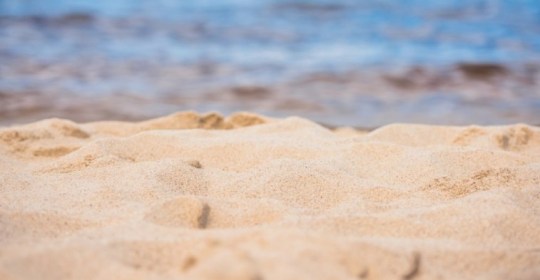
As embarrassing as it is to admit, I think by human nature it’s much easier to care about someone else’s journey in life when they have something in common with you. What I love about art is that when you meet another artist, no matter who, you feel a sort of magical connection to that person and are bonded over your mutual appreciation of it. I am a woman and I am an artist, and because of that, I feel lucky and unworthy in saying I have something in common with these incredibly talented Armenian women that I’m about to share with you.
I. Zabelle Boyajian (1872-1957)
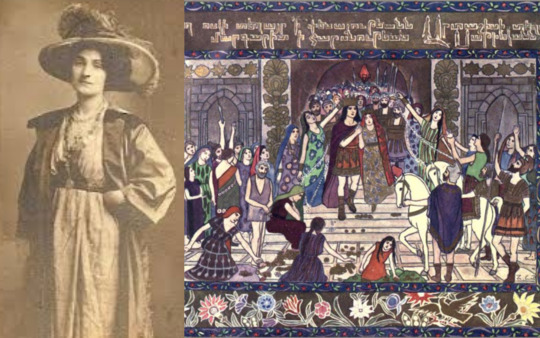
Zabelle C. Boyajian was a poet, painter and playwright of the Ottoman Empire, born in 1872 in Diyarbakir, one of the ancient Armenian capitals, ‘Tigranakert’. After the murder of her father during the Hamidian Massacres of 1895, she, her mother and her brother immigrated to London. She travelled extensively throughout her lifetime and learned to speak eight languages fluently, including Armenian, English, German, Italian, Greek, Turkish and Russian. Being skilled in so many languages, apart from the arts, she was a great contributor to the translation of many great Armenian works. For example, in 1948, she translated Avetik Isahakian’s epic poem “Abu Lala Mahari” and published it for the world to read. In 1938, thanks to her wide travels, she published several illustrations from her visit to Greece, entitled “In Greece with Pen and Palette”. Exhibitions of her art were held in London, Egypt, France, Italy, Belgium and Germany. She was close friends with Anna Raffi, the wife of the well-known Armenian novelist, Raffi. One of the leading female trailblazers of art, literature and translation, she published her first novel in 1901, entitled “Esther”. She is well known today for her gorgeous storybook illustrations.
II. Miriam Aslamazian (1907-2006)

Miriam Aslamazian, sometimes called the Armenian Frida Kahlo, was born on October 20th, 1907 in Alexandropol in the village of Bash-shirak. She was was a Soviet painter of Armenian descent recognized for her exquisite ceramic plates. In 1929, she graduated from the Yerevan Art-Industrial Technicum and later in 1933, from the Leningrad Academy of Art. In 1946, she became a member of the CPSU (the Communist Party of the Soviet Union). Her work is often described as decorative, flat still-life pieces as well as possessing dramatic, colorful themes. Many pieces of her artwork can be found today in the Aslamazian Sisters’ Museum in Gyumri. She was honored as People’s Artist of the Armenian SSR 1965 and People’s Artist of the Soviet Union in 1990.
III. Gayane Khachaturian (1942-2009)

Gayane Khachaturian, born May 9th, 1942 in Tbilisi, Georgia, was a Georgian-Armenian graphic artist and painter. She studied at the Nikoladze Art School and the Secondary School of Working Youth, where she graduated in 1960. Sergei Parajanov, who she was close friends with, was a major inspiration for her. Some of her works are permanently displayed and can be seen at the National Gallery of Armenia, the Yerevan Museum of Modern Art as well as the Sergei Parajanov Museum in Yerevan. Her works have also been purchased and are included in several private art collections. Her first informal solo exhibition was at Skvoznyachok Café in Yerevan in 1967.
IV. Sonia Balassanian

Sonia Balassanian is a mixed media artist, art curator, founder and Artistic Director of the Armenian Center for Contemporary Experimental Art in Yerevan, Armenia. Born in Iran of Armenian descent on April 8th of 1942, Balassanian uses her artwork to advocate for human rights and women's emancipation issues. In 1970, she obtained a BFA from the Pennsylvania Academy of Fine Arts and the following year worked on an independent study program at the Whitney Museum of American Art. In 1978, she completed her MFA from Pratt Institute in Brooklyn, New York. The following year, however, the 1979 events in Iran caused her to turn to “political art” as self expression. She is also a skilled writer, publishing several works, including, “There Might Have Been An Insane Heart” (1982), composed of selected poems written in the Armenian language, “Portraits” published in New York in 1983 and “Two Books” (2006), a publication of two books of poems in one combined.
V. Nora Chavashian
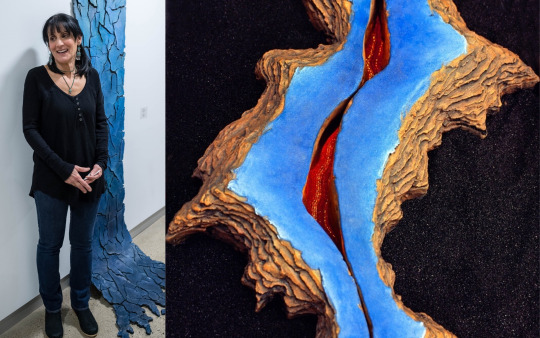
Nora Chavashian is an award-winning production designer, art director and set decorator, recognized for her sculptural stage sets, born in Philadelphia, PA on October 25th, 1953. OMG we have the same birthday, no wonder I like her! There, she studied sculpture at the Pennsylvania Academy of Fine Arts. In 1974, Chayashian graduated from the San Francisco Art Institute (SFAI). In 1984, she married Joe Morton, an American actor, director, writer, singer and songwriter, with whom she has three children, Hopi, Seta and Ara, and one grandson, Moses. In 1988, she and her family relocated to the East Coast. Her sculptures often have organic shapes and are reminiscent of nature.
VI. Anush Yeghiazaryan
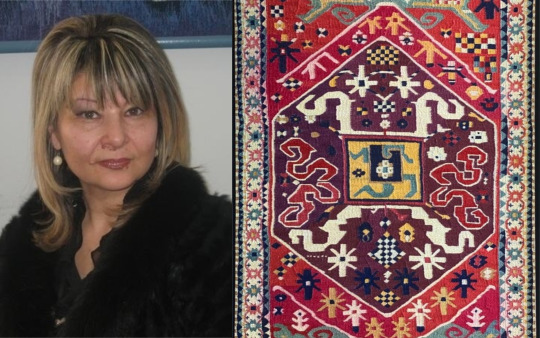
Anush Yeghiazaryan is a painter, weaver and professor born on June 15th, 1965 in Yerevan, Armenia, known for her stunning tapestry creations. Hailing from the family of Karapet Yeghizaryan, patriarch of the Armenian school of art weaving, she has held up the traditional weaving techniques of her ancestors. From 1984 to 1990, she studied graphic design at the Yerevan State Fine Arts Academy. From 1991 to 1994, she worked on obtaining her PhD from the State Armenian Pedagogical University. In 1996, she became a member of the Armenian Union of Artists. In 2010, Yeghiazaryan joined the Pan-Armenian Painting Association. She has had her work presented in exhibitions around the world, from Yerevan to Paris, Moscow, Sankt Petersburg, Bouve, Plovdil, Tehran, Italy and Praha. Quoted for saying, “I have not chosen art, it’s in my blood. It’s my lifestyle and I love it up to sublimation degree”. Some of her pieces displaying masterful weaving techniques include,“If you live, create” (1998), “Once Upon a Time in Paris” (2003), and “Urbanization” (2006).
VII. Taleen Berberian
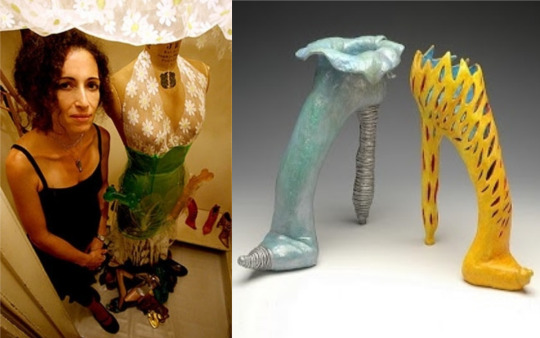
Taleen Berberian is a modern Armenian visual artist, specializing in mixed mediums, crafted fabric, clay sculptures, drawing and the use of the traditional Armenian sewing, embroidery and crochet techniques in unconventional ways. She is especially recognized for her famous sculptures of shoes. Berberian has been on the forefront of women’s issues, a theme that can be seen through her artwork. She is an active participant in both Los Angeles and New York’s art communities. In 1995, she obtained a BFA in Sculpture from the California College of the Arts in Oakland, California and in 1998 she continued on to achieve a MFA in Studio Art and Art Education from Pratt Institute in Brooklyn, New York. In 2009, she received her Initial Teachers’ Certification in Visual Art for grades K-12 and currently serves as a quilting and ceramics instructor.
VIII. Joanne Julian

Found out artist Joanne Julian and I are both CSUN alum and native Angelenos! Julian, who is of Armenian ancestry, says she has been highly influenced by her travels to Asia and thus became skilled in certain Asian techniques, such as mono printing and the “flung ink” or “Haboku” style. Her pieces possess a “Zen quality” to them, as portrayed in her “Zen Circle” series, illuminating the Yin and Yang of Taoist painting. She received her Bachelor’s of Arts and her Masters in sculpture and printmaking from California State University, Northridge. She later received her MFA from the Otis Art Institute of Parsons School of Design. She has participated in over sixty group exhibitions and twenty solo exhibitions nation-wide. Since 1973, Julian has served as the Chair of the Fine Arts Department and Gallery Director at the College of Canyons in Valencia, California. In 2008, from January 25th to February 23rd, she held an exhibition at CSUN’s Art Gallery entitled, “Counterpoints”.
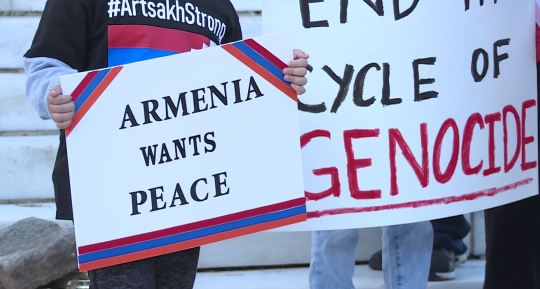
All of the female artists I mentioned have given people a better look into what it means to be Armenian and how the community and its diaspora are trying to solidify the Armenian identity to enable its rich heritage and traditions to live on. And they are just a few of the proud Armenians who have helped raise awareness of the issues Armenians face, as well as give Armenians their due respect in the realm of International Art. And to go one step further, my deepest hope is that one day, art will overcome the war.
#armenian#armeniangenocide#genocide#journalism#armenianprotests#azerbaijan#femaleartists#artists#art#artist#femaleartist#armenianart#armenianartist#armenianartists#armenia#culture#zabelleboyajian#joannejulian#taleenberberian#anushy#Miriamaslamazian#Sonia Balassanian#soniabalassanian#female artists#armenian genocide#armenian artists#armenian art#armenianwomen#armenian women#peaceforarmenians
14 notes
·
View notes